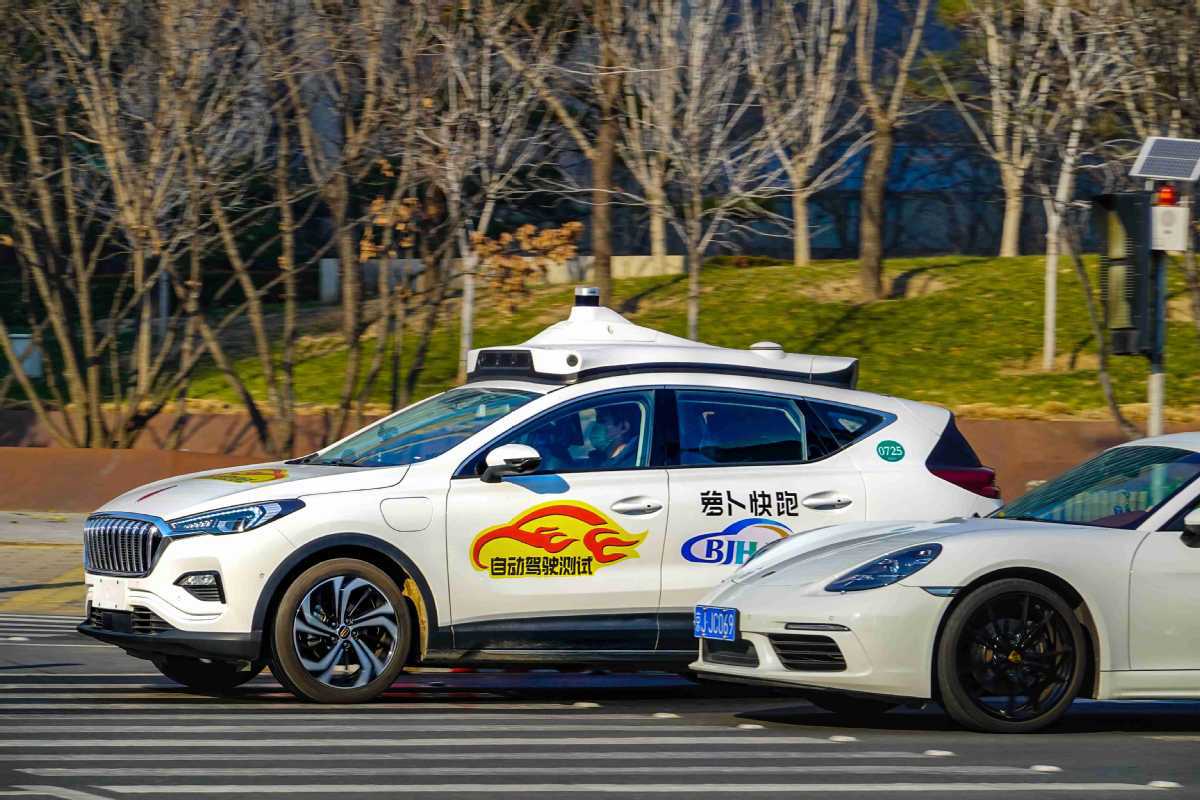Fully driverless robotaxis set to roll


Tech giant Baidu Inc announced on Monday that it has secured China's first permits to offer fully driverless commercial robotaxi services to the public on open roads, thus marking a significant milestone for the autonomous ride-hailing industry that is expected to accelerate large-scale commercial use of self-driving technology, industry experts said.
They said China has taken the lead in the research and development as well as application of self-driving technologies and it is the first country to allow fully driverless paid robotaxi operations.
Apollo Go, Baidu's autonomous ride-hailing service, is authorized to charge fares for robotaxi services-completely without human drivers in the car-in Chongqing and Wuhan, capital of Hubei province.
The new permits, which were granted by authorities in Wuhan and Yongchuan district, Chongqing, will allow Baidu to provide paid services for fully driverless robotaxis in designated areas in Wuhan from 9 am to 5 pm, and in Chongqing from 9:30 am to 4:30 pm, with five self-driving vehicles operating in each city.
The service areas cover 13 square kilometers in the Wuhan Economic & Technological Development Zone, and 30 square kilometers in Chongqing's Yongchuan.
"This is a tremendous qualitative change," said Wei Dong, vice-president and chief safety operation officer of Baidu's Intelligent Driving Group, adding that fully driverless cars providing rides on open roads to paying customers mean they have finally come to the moment the industry has been longing for.
To receive the permits, Baidu's robotaxis have undergone multiple steps of testing and licensing, starting from tests carried out with a safety operator in the drivers' seat to a safety operator in the passenger seat, before finally receiving authorization to operate autonomous vehicles with no human drivers or operators in the vehicle, the company said.
Zhang Xiang, a researcher at the Automobile Industry Innovation Research Center at the North China University of Technology in Beijing, said approval to operate fully driverless robotaxis in Wuhan and Chongqing is a critical milestone in the transition from Level 3 to Level 4 autonomous driving capacity, which means the vehicle can drive by itself under most circumstances without a human backup driver.
"The move is of great significance to dramatically reduce labor costs and lays a solid foundation for bolstering large-scale commercialization of autonomous driving technology in China," Zhang said.
The manufacturing costs of driverless vehicles' components, such as lidar sensor systems, have declined along with advances in self-driving technology and maturity of related industrial chains, he added.
China has caught up with the United States in autonomous driving development, with Wuhan and Chongqing allowing driverless vehicles to carry passengers and charge for such services, said Lyu Jinghong, an intelligent mobility analyst at research firm BloombergNEF.
Lyu said more Chinese cities are expected to follow the two pioneering urban centers by gradually allowing for robotaxi pilots and commercialization, which will help autonomous driving developers improve their technologies and explore business models.
Experts have also warned that firms should proceed cautiously, especially when it comes to public safety.




































